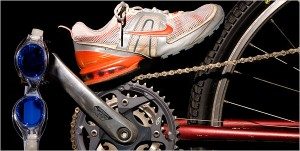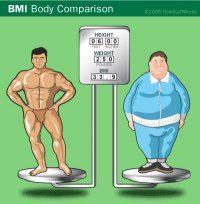Why carbo-load, when you can fat load? This came to me the night before a long training run (4 hours). I was at a birthday celebration, and admittedly, indulged in all the fried food and ice cream with whipped cream (oh well, once I had given in to temptation, I might as well go all out) I could lay my hands on. I was constantly anticipating how awful my run the next day was about to feel, knowing I had forfeited my planned carbo-loaded meal. While fat loading, I was also justifying in my head that if fat is a fuel source that we pull from when glycogen (the limited source of fuel) is depleted, then delicious dinner this night could potentially spare glycogen. Strangely enough, I did have one of my most energized runs the following day. As any good scientist would do, I began my literally search for this exciting venture – could this be the beginning of a new trend to endurance training. My mission: open up the possibility of eating ice cream, hot wings, pizza, barbeque, chocolate… all the things that most regimented athletes dream of, and improve their performance to boot. My ego was quickly depleted when I discovered that this was not a new hypothesis.
The first claims to diet having an influence on performance emerged as early as 1939, with research done by Christensen and Hansen showed that an individual’s typical diet can determine the fuel likely to be utilized during aerobic activity. High fat diets were experimented with and were found to be adaptive, meaning, a high fat diet, low carb diet, defined as greater than 60% intake from fat and less than 20% intake from carbs, for as little as three days could increase fat oxidation during moderate intense exercise, (Jansson and Kaijser,1982). Unfortunately, the capacity of glycogen, was found to be diminished. Phinney (1983) took this further to examine the effect on longer term high fat diets on glycogen capacity. Close to a month of a high fat intake (> 85% of daily calories from fat) versus the typical balanced diet for most athletes (60% carbs, 20% protein, ~20% fat) showed that glycogen capacity was more stable. Phinney thus concluded at that time, that a long term high fat diet has potential in increased performance and endurance. Phinney’s design was not without flaws: Firstly, the subjects were trained cyclists, and it is not uncommon that a trained athlete can maintain a moderate intensity for a longer period, even in a fasted state. The results were also skewed by one subject with a greater than 60% difference in performance to all the other subjects. For practical reasons, applying these results may be unrealistic, as it is rare for athletes to exercise at intensities low enough for fat oxidation in any events less than 3 to 4 hours.
A study performed in 1996 by Hegle, used untrained cyclists split into two groups, one group on a high fat eating plan for the seven week training period and the other on high carbs during this time. This study represents the longest carbohydrate restriction scenario to date. The untrained criterion was intended to level the playing field for potential preconditioning. The results showed that the high fat diet did not have any advantage in performance over the high carb diet. Comparing these results against the studies of high fat diets in trained athletes merely points out that high fat diets may in fact weaken an adaptation to training.
More recently, a couple of different studies have been done with the hypothesis that following a fat loading phase for a number of days, a shorter carbohydrate loading phase could solidify the glycogen storing capacity. In fact, these studies were using the strategy of what was referred to as “carbo-loading”. This protocol is similar to the original carbo loading strategy which incorporated a depletion phase. During depletion, carbs were minimized almost to the point of zero percent of caloric intake before the loading phase began. For athletes used to strict nutrition regimens of healthful foods, depletion by eating fat was heavenly. A study done atIndianaUniversityfound that this works in lab animals (rats). Rats on a high fat diet could probably win the rat race but when this hypothesis was applied to humans in a study done in New Zealand, the fat oxidation was increased but not without the demise of reduced performance. TheNew Zealandresearchers compared a 14 day high fat diet to a 11.5 day high fat diet followed by a 2.5 day carbo-loading phase. They analyzed the results of fat oxidation in a 15 minute time cycle followed by a 100 km cycle. The rationale was that a couple of weeks on the high-fat diet will stimulate an increases in fat oxidation capacity during exercise, and following this adaptation period, the carbo-loading will maximize muscle glycogen stores required for the higher intensity or maximal endurance effort. Performance was slightly better for the 15 minute cycle after the high carb diet but not significantly. There was no significant difference in performance for the 100 km test. However, fat oxidation was significantly greater during the 100km cycle test following the 14 day high fat diet. This, amongst other similar studies, suggests that endurance may be enhanced following fat loading, but it may reduce performance in shorter, high intensity bouts of exercise.
Tim Noakes, a researcher fromCape Townalso found that carbo-loading after a number of days of high fat was a strategy that works. He compared the effects of a high fat diet for 2 weeks, against a regular typically balanced diet, for 2 weeks, both followed by a carbo-loading phase, on a cycling time trial performance. The high fat diet increased total fat oxidation and reduced carbohydrate oxidation over both a 2.5 hour moderate intensity trial and a 20km time trial. Moreover, the cyclists completed the 20km time trial 4.5% faster on the high fat diet. His research design was criticized for favoring improved fat burning, since a moderate 2.5 hour ride ensured glycogen depletion before starting the time trial, forcing a reliance of fat oxidation regardless of the pre work out diet. If a time trial was initiated without the 2.5 hour ride, it would be unlikely for a high fat diet to increase performance, reinforcing what the New Zealanders found. Even muscles that are trained to burn fat, will turn to carbohydrates as a fuel source at higher intensities.
It is tempting to recommend a fat loading strategy for endurance and ultraendurance sports due to a natural lower intensity. However, the strategic activities that occur in competition, often involve inconsistent surges, such as climbing hills, sprints to pass competitors, or sprints to the finish. Glycogen sparing is only obtained if the exercise is performed at low to moderate intensity (at most). In a competitive situation, the intensity threshold that causes the muscles to activate carbohydrate oxidation, will more than likely be crossed, even for an average endurance athlete. Noakes does suggests that any activity greater than three hours is likely to have a low enough intensity to rely on fat as a fuel and thus a high fat diet for a few days prior, would not be detrimental to performance. It may be worth a try.
The protocol of high fat adaptation followed by high carbs was further applied to a group of cyclists by Havemann et al., to include typicalfeatures of a real race, such as surges, tempo riding, and cycles of moderate to high intensity segments. The results show that the high fat followed by high carbs did not degrade performance on the overall endurance ride but it did infact compromise performance of well-trained cyclists during high-intensitysurges. The level of the enzyme responsible for fat metabolism studied in a group of cyclist was raised but evidence also showed the enzyme responsible for carbohydrate breakdown was lowered. What was once thought of as “glycogen sparing”after adaptation to a high fat diet actually weakens carbohydrate oxidation particularly at times when muscle carbohydrate requirementsare high. The research laid out above not only shows that fat loading would enhance to performance, but it also shows that the need for a depletion phase in the original regimen of carbo-loading is no longer necessary. A consistent intake of carbohydrates has since been proved optimal.
In summary, even though muscles are able to adapt to burning more fat as a fuel, it is not without the demise of impairing muscle glycogen capacity, thus limiting the potential of either increasing performance or endurance. Furthermore, the conditions to enhance adaptation to fat oxidation would require an habitual high fat diet over a long period of time. This in itself would open a whole new can of worms. High fat is associated with an increase in chronic disease risks such as obesity, diabetes, cardiovascular disease, etc. Although activity supposedly lessens these risks, the body mass increase from habitually high fat intakes negates this.
Bottom line: for events less than or equal to three hours, carbo loading is best, minus the depletion phase. For longer efforts, 10 days of fat plus three days of carbs might give you more endurance. But be aware of the consequences, performance may suffer and such fat loading is likely to impair any weight management goals.
REFERENCES
- 1. ‘Effects of a Low-Carbohydrate, High-Fat Diet Prior to Carbohydrate Loading on Endurance Cycling Performance,’ Biochemistry of Exercise Ninth International Conference, p. 32, 1994
- Havemann L, West S, Goedecke JH, McDonald IA, St-Clair Gibson A, Noakes TD, and Lambert EV. Fat adaptation followed by carbohydrate-loading compromises high-intensity sprint performance. J Appl Physiol 100: 194–202, 2006.
- Helge JW, Richter EA, and Kiens B. Interaction of training and diet on metabolism and endurance during exercise in man. J Physiol 492: 293–306, 1996.
- Burke LM, Angus DJ, Cox GR, Cummings NK, Febbraio MA, Gawthorn K, Hawley JA, Minehan M, Martin DT, and Hargreaves M. Effects of fat adaptation and carbohydrate restoration on metabolism and performance during prolonged cycling. J Appl Physiol 80: 2413–2421, 2000.
- Burke LM and Hawley JA. Effects of short-term fat adaptation on metabolism and performance of prolonged exercise. Med Sci Sports Exerc 34: 1492–1498, 2002.
- Burke LM, Hawley JA, Angus DJ, Cox GR, Clark S, Cummings NK, Desbrow B, and Hargreaves M. Adaptations to short-term high-fat diet persist during exercise despite high carbohydrate availability. Med Sci Sports Exerc 34: 83–91, 2002.
- Kiens B and Helge JW. Adaptations to a high fat diet. In: Nutrition in Sport, edited by Maughan RJ.Oxford,UK: Blackwell Science, 2000, p. 192–202.
- Lambert EV, Goedecke JH, Van Zyl CG, Murphy K, Hawley JA, Dennis SC, and Noakes TD. High-fat versus habitual diet prior to carbohydrate loading: effects on exercise metabolism and cycling performance. Int J Sport Nutr Exerc Metab 11: 209–225, 2001.
- Lambert EV, Speechly DP, Dennis SC, and Noakes TD. Enhanced endurance in trained cyclists during moderate intensity exercise following 2 weeks adaptation to a high fat diet. Eur J Appl Physiol 69: 287–293, 1994
- PhinneySD, Bistrian BR, Evans WJ, Gervino E, and BlackburnGL. The human metabolic response to chronic ketosis without caloric restriction: preservation of submaximal exercise capability with reduced carbohydrate oxidation. Metabolism 32: 769–776, 1983.[CrossRef][Web of Science][Medline]










This blog was… how do I say it? Relevant!! Finally I have
found something that helped me. Thanks a lot!
Everything is very open with a really clear clarification of
the issues. It was really informative. Your site is extremely helpful.
Many thanks for sharing!
Hi there! I could have sworn I’ve been to this blog before but after checking through some of the post I realized it’s new
to me. Anyhow, I’m definitely glad I found it and I’ll be book-marking
and checking back often!
you’re actually a excellent webmaster. The web site loading pace is amazing.
It sort of feels that you’re doing any unique trick. Moreover,
The contents are masterwork. you have done a great
process in this matter!